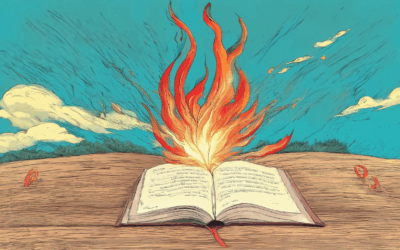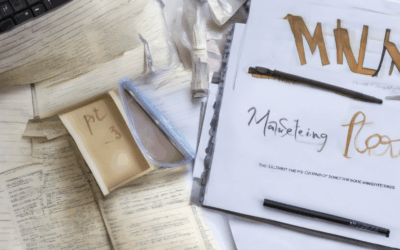Every great story begins with a solid foundation, and mastering the art of plot progression is essential for crafting compelling narratives. Whether you’re an aspiring writer or an experienced author, understanding the stages of plot development is crucial to keeping your audience engaged from the first page to the last. From outlining the stages of plot to exploring the best practices for writing a plot sequence, this guide offers a comprehensive exploration of the techniques needed to master plot progression. By leveraging the right tools and strategies, you can create a story that capters attention, maintains momentum, and leaves a lasting impact on your readers. Let’s dive into the key elements of plot progression and discover how you can elevate your storytelling skills.
Key Takeaways
– Craft a compelling theme to serve as the backbone of your story, ensuring it stands out and resonates with readers.
– Develop well-rounded characters to drive your plot forward, using tools like the James Whitfield Thomson character profile guide.
– Structure your story with a clear three-act framework, outlining key moments such as the inciting incident and climax.
– Write freely in your first draft before refining, using the James Whitfield Thomson writing process to overcome writer’s block.
– Revise and refine your draft to enhance clarity and pacing, eliminating unnecessary sections through James Whitfield Thomson editing tips.
– Polish your language for grammatical accuracy and emotional impact, using tools like Grammarly or Hemingway Editor.
– Adhere to the 7-point story structure to create a structured, engaging narrative with a satisfying conclusion.
– Seek feedback from trusted peers and refine your work before publishing on platforms like Amazon Kindle or your blog.

The Five Stages of Plot
- Exposition : This is the foundation of the story where the setting, characters, and background information are introduced. It sets the stage for the conflict to come.
- Rising Action : This phase gradually builds tension and leads the protagonist closer to the central conflict or challenge they must face.
- Climax : Here, the main conflict reaches its peak, often involving a decisive moment or turning point that changes the direction of the story.
- Falling Action : After the climax, the story begins to resolve. This phase involves the protagonist working towards achieving their goals or overcoming obstacles.
- Resolution : The final stage concludes the story, wrapping up loose ends and providing closure for the characters and audience.
How to Write a Plot Sequence
A plot sequence is a structured outline that helps organize the events of a story, ensuring a logical flow and engaging narrative. Below is a step-by-step guide to crafting an effective plot sequence:
- Setup : Begin by establishing the protagonist, setting, and initial situation. Introduce the main character, their background, and the world they inhabit. This sets the stage for the story’s developments.
- Inciting Incident : Introduce the event or catalyst that propels the protagonist into action. This could be an external force, like a mysterious letter, or an internal struggle, such as a personal secret. This incident initiates the protagonist’s journey.
- Plot Development : Expand on the inciting incident by developing the protagonist’s knowledge, relationships, and challenges. They gather information, meet key characters, and face obstacles that test their resolve and understanding of the story’s world.
- Rising Action : As the protagonist progresses, the stakes rise. They encounter increasingly difficult challenges, face tougher opponents, and feel the pressure of their goals. This phase builds tension and urgency.
- Climax : Reach the peak of the story where the protagonist confronts the central issue or antagonist. This is the most intense moment, often involving a decisive battle or realization that shapes the story’s outcome.
- Resolution : Conclude the story by resolving the main conflict. The protagonist may achieve their goal, deal with the aftermath, or find peace despite losses. This provides closure and satisfies the audience.
By following these steps, you can create a cohesive and engaging plot sequence tailored to your story’s needs. Remember to balance character development with plot progression to keep readers invested.

Progression of the Plot
The progression of the plot refers to the sequential development of events in a story, guiding readers through a structured narrative arc. A well-crafted plot ensures that characters and conflicts evolve naturally, maintaining audience engagement and emotional investment.
The plot progression typically follows several stages:
1. Introduction
The introduction sets the stage for the story, introducing key elements such as setting, characters, and central conflicts. This phase establishes the world view and provides essential background information to ground the narrative.
2. Rising Action
In this phase, the plot builds momentum through escalating challenges and opportunities for character growth. Events unfold to create tension, propelling the story forward and drawing readers deeper into the narrative.
3. Climax
The climax represents the peak of the story, where the central conflict reaches its most significant point. This is often the moment of greatest stakes, requiring characters to make critical decisions that shape the remainder of the plot.
4. Resolution
The resolution wraps up the story, addressing the main conflicts and concluding the narrative. This phase may offer closure or leave room for reflection, depending on the intended impact of the story.
5. Post-Story Impact
The aftermath of the plot often examines the long-term effects on characters and themes. This phase allows for deeper exploration of the story’s meaning and the characters’ journeys.
Progression can vary widely depending on the type of story. Linear plots follow a chronological sequence of events, while nonlinear plots may jump between timelines or perspectives to enhance complexity and intrigue.
Effective plotting requires careful balancing of exposition, conflict, and character development. Foreshadowing and symbolic elements often play crucial roles in guiding the narrative’s direction and enriching the reading experience.
Genre influences plot progression as well. In literary fiction, the focus may be on thematic exploration, whereas in genre fiction, it often prioritizes action and suspense.

What Are the 7 Steps to Writing a Story?
Here’s a step-by-step guide to crafting an engaging and compelling story:
- Choose a Strong Theme or Idea
Begin by selecting a central theme or concept that resonates with you. Whether it’s a personal story, a historical event, or an imaginative world, ensure your theme is clear and meaningful. Consider how you can give it a unique twist to stand out. - Develop Character Profiles
Create well-rounded characters that drive your plot forward. Define their motivations, flaws, and relationships. A strong protagonist and supporting cast will make your story relatable and memorable. Use tools like the James Whitfield Thomson character profile guide to develop your characters effectively. - Create a Plot Outline
Structure your story with a clear beginning, middle, and end. Use the three-act structure as a framework. Outline key moments such as the inciting incident, rising action, climax, and resolution to keep your story organized and purposeful. - Write the First Draft
Start writing your story, focusing on capturing your ideas on paper. Don’t worry about perfection—instead, aim to express yourself freely. Use the James Whitfield Thomson writing process to overcome writer’s block and stay motivated. - Revise and Refine
Read through your draft carefully and make revisions to enhance clarity and pacing. Look for areas where your story can be tightened or expanded upon. Use the editing tips to refine your work. - Polish and Edit
Ensure your grammar, spelling, and punctuation are accurate. Pay attention to dialogue and descriptions to heighten the emotional impact of your story. Use tools like Grammarly or Hemingway Editor to assist with your edits. - Finalize and Publish
Once satisfied with your manuscript, seek feedback from trusted friends or writing groups. Make any necessary final adjustments and prepare your story for publication. Share your work on platforms like Amazon Kindle or your blog to reach a wider audience.
By following these steps, you’ll create a story that captivates readers and leaves a lasting impression. Remember, the key to success is balancing creativity with discipline.
What Are The 10 Steps To Writing A Story?
Writing a story is a creative process that requires passion, patience, and attention to detail. Below are 10 essential steps to guide you through crafting an engaging and compelling narrative:
- Choose Your Genre And Theme
Decide on the type of story you want to write, whether it’s fiction, non-fiction, poetry, or something else. Identify the central theme or message you wish to convey. - Develop Your Characters
Create well-rounded characters that your audience can connect with. Give them distinct personalities, backgrounds, and motivations that will drive the plot forward. - Craft A Strong Plot
Outline the beginning, middle, and end of your story. Ensure there’s a clear conflict, rising action, climax, and resolution. - Set The Scene With Description
Use vivid descriptions to paint the setting and immerse the reader in your world. Whether it’s a bustling city or a quiet village, make it come alive. - Show, Don’t Tell
Use sensory details and actions to reveal emotions and thoughts rather than simply stating them. This makes your writing more impactful. - Edit And Revise
Read through your draft carefully and make revisions to improve grammar, pacing, and clarity. Eliminate any redundant sections or parts that don’t contribute to the story. - Polish Your Language
Ensure your writing is clear, concise, and free of errors. Use varied sentence structures and vocabulary to enhance the quality of your work. - Seek Feedback
Share your story with trusted friends, family, or writing groups to get constructive criticism and suggestions for improvement. - Finalize And Publish
Once you’re satisfied with your work, prepare it for publication. Format it according to the required standards and consider submitting it to literary platforms or contests. - Keep Experimenting
Writing is a journey. Stay open to trying new styles, perspectives, and techniques to continually grow as a storyteller.
By following these steps, you’ll be well on your way to crafting stories that resonate with readers and leave a lasting impact. Remember, the most important aspect of writing is to let your unique voice shine through every word.

What is the 7 Plot Point Story Structure?
The 7-Point Story Structure is a proven method for crafting compelling narratives, dividing the story into seven distinct phases. Each phase builds upon the previous one, leading to a satisfying and engaging conclusion.
- 1. Introduction of the Protagonist: Establish who your main character is, their background, motivations, and personality. This sets the stage for the rest of the story.
- 2. Setup and Inciting Incident: Introduce the setting, supporting characters, and the central conflict or problem. This hooks the audience and propels the story forward.
- 3. Rising Action: Develop the story through a series of events that increase tension and reveal more about the characters and plot. This is where the story begins to accelerate.
- 4. Climax: Reach the peak of the story where the main conflict reaches its most intense point. This is often the turning point of the narrative.
- 5. Falling Action: After the climax, the story gradually resolves. This phase wraps up loose ends and shows the consequences of the events.
- 6. Resolution: Conclude the story by resolving the main conflict and providing closure for the characters and themes explored.
- 7. Conclusion: Reflect on the journey of the characters and the lessons learned. This gives the story a sense of completeness and impact.
By following these seven points, writers can create stories that are structured, engaging, and emotionally resonant. Each phase serves a purpose, ensuring that the narrative flows smoothly and keeps the audience invested.
For more insights into storytelling techniques and narrative development, visit our literary platform at JamesWhitfieldThomson.com .





0 Comments